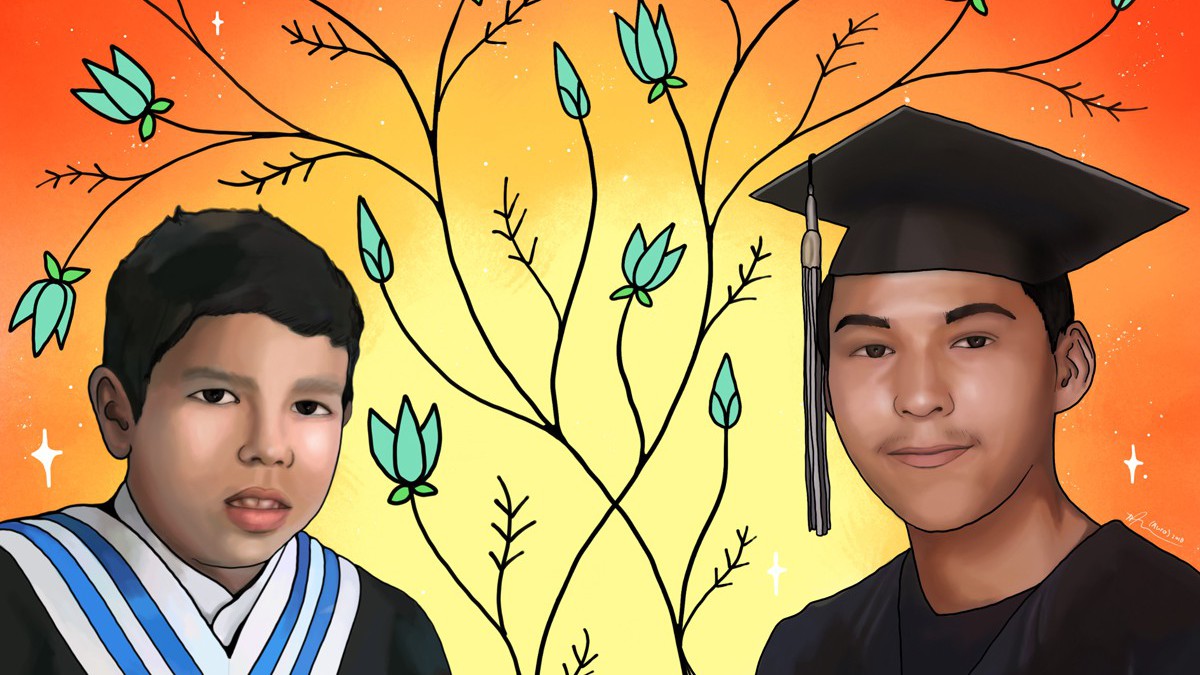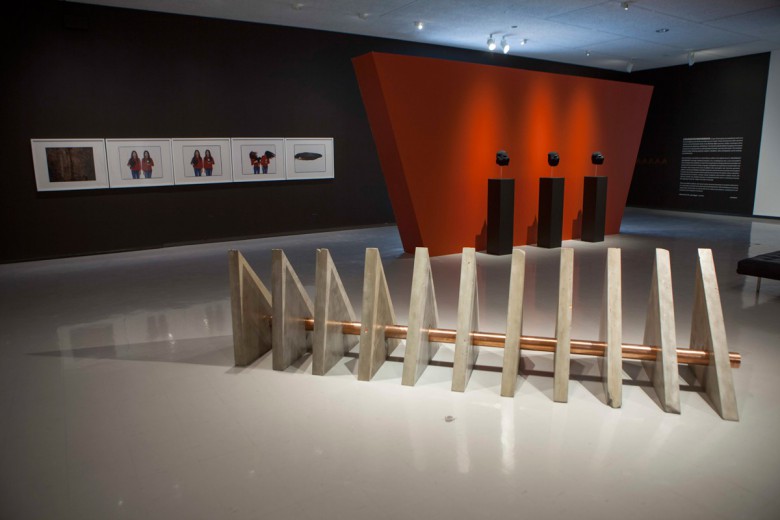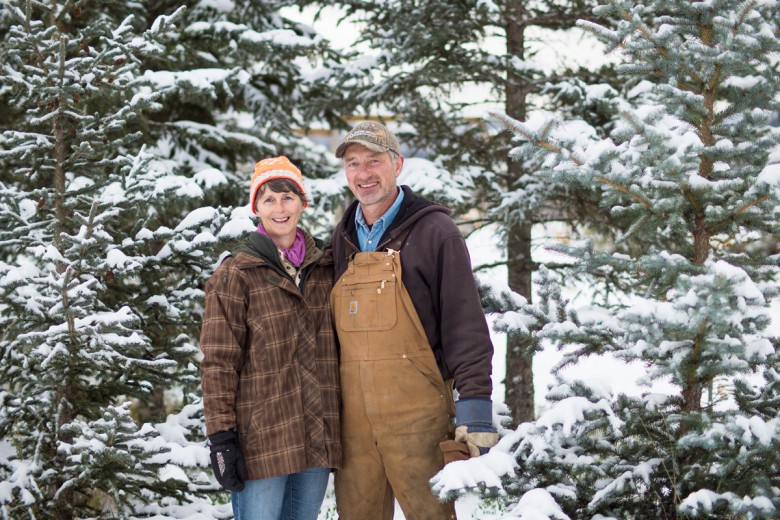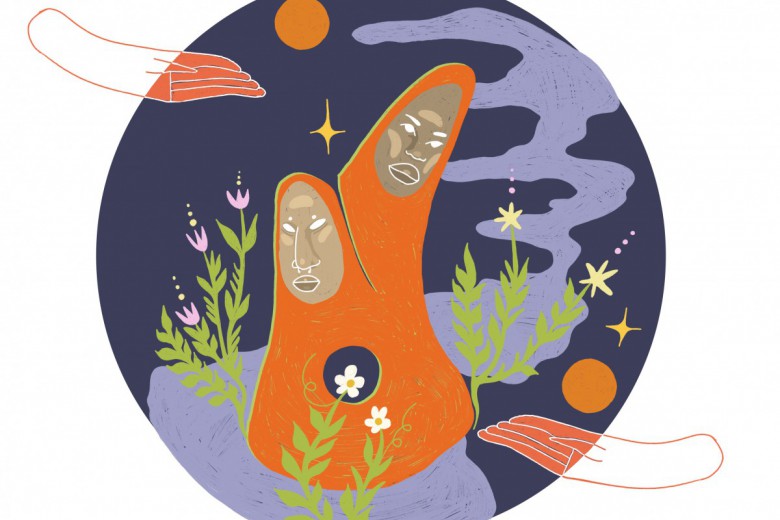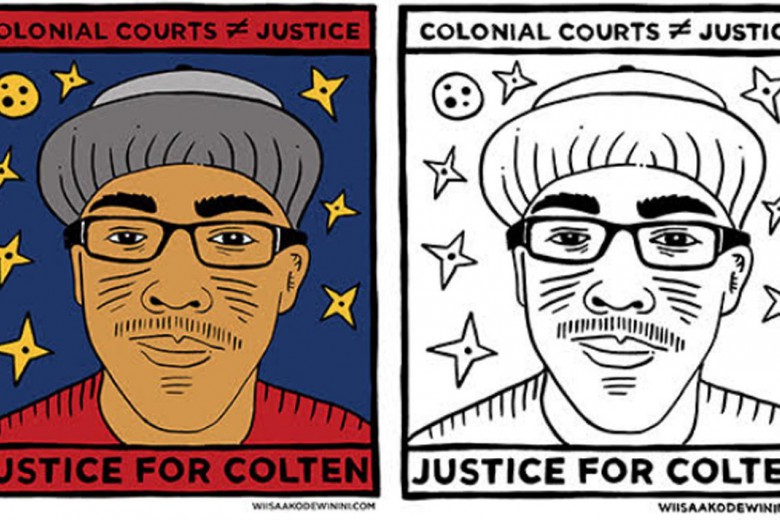We sat together in a tiny old courthouse in Battleford, Saskatchewan. We were an odd couple, we joked: an Indigenous woman (Richelle) and a settler (Michelle). Most days during the trial, the courtroom on the second floor could be cut in half: the white half – family and supporters of the accused – and the brown half – family and supporters of the victim. In a space of such polarized racial politics, the two of us walking in together produced confusion. This was meant to be the trial of Gerald Stanley for the murder of Colten Boushie – but from the start it was the trial of Colten Boushie.
We started to write this article less than 72 hours after the jury acquitted Gerald Stanley of second-degree murder and the lesser charge of manslaughter. In this article we will discuss systemic issues that arise in Colten’s case and draw connections to Richelle’s experiences when her son, Haven Dubois, died in 2015. These cases are not about a specific police slip-up or an all-white jury. We are concerned with the systemic racism that is driving the justice system – the many levels of which can be most clearly understood when looking at patterns between individual cases. So, we write this article in honour of Colten’s and Haven’s memories, and for all the Indigenous families that continue to fight for justice.
A white setting
One of the goals of this article is to reflect on the state of the justice system. In the Stanley case, the all-white jury is symbolic of a system that excludes Indigenous people. Stanley’s defence challenged every visibly Indigenous juror, eliminating them from the jury one by one. But it isn’t just about this particular jury: whiteness extends through every tier of the justice system.
Richelle counts on each finger the ways that white authority presented itself in the courtroom: the jurors, the judge, the two Crown attorneys, the three defence attorneys, at least six sheriffs who patrolled the room, and security. “All of it was in a white setting,” she explains matter-of-factly. “I didn’t see one First Nations [person] on their walls [or] any reference to First Nations. There is nothing in their courthouse to show that they wanted any First Nation’s input, or perspective, or partnerships. It just felt cold and white.”
The only visibly Indigenous people in authority positions were strategic: two plainclothes officers who were present from jury selection through to the verdict. Cold and white except for “those token Indians – but that was just for looks,” Richelle says. Richelle has had many experiences of challenging an all-white justice system while advocating for her son. In these settings, too, white gatekeepers would present “token Indians” at various moments in meetings.
But it isn’t just about this particular jury: whiteness extends through every tier of the justice system.
For all intents and purposes, these two Indigenous officers appeared to be court observers. While they were clearly cops (from the visible outline of Kevlar under their clothes), until the night of the verdict they did not appear to have a specific function in the courtroom. The night of the verdict, the air hung heavy between the time that we knew there was a verdict and the time it would be read: 21 minutes.
“I remember trying to walk past the female officer back into the courtroom,” Michelle recalls. “I didn’t think of her as a court officer because she hadn’t assumed that role since jury selection started. Suddenly, she was posted at the door. She directed me to take a seat or to go downstairs. It was only then that I noticed her posture had changed: she appeared to be in charge of the space. In less than four minutes I would be running past her as the room erupted with the verdict. I then noticed that officers appeared to have unclipped their guns. The space was orchestrated and organized for an acquittal.”
And while it was the Indigenous people in the room who were dehumanized in the moment of acquittal, the officers mobilized not around the Boushie family, but rather to protect the accused.
“The space was orchestrated and organized for an acquittal.”
Joe Friesen of the Globe and Mail would write about the seconds after the verdict: “Sheriff’s deputies immediately rushed to protect Mr. Stanley, who ducked and flinched, as if he was being attacked. They grabbed Mr. Stanley by the arm and ran with him out of the courtroom as the crowd in the public gallery erupted and armed RCMP officers moved in between.” Throughout the trial, Stanley would receive special consideration and protection. While the media flew into a frenzy, as Debbie Baptiste (Colten’s mom) cried out and other family members screamed in horror, the justice system swiftly moved the jury away from the crowd. The accused was whisked from the room, and the family was left to have their grief consumed by a national audience as reporters furiously typed and tweeted the scene in the courtroom. More trauma – not justice. It was something Richelle has been living with for nearly three years.
A two-tiered justice system
Richelle recalls the minutes and hours following the death of her son. Haven was just a few weeks shy of his 15th birthday when she found his body in a shallow ravine near their home in Regina. It had been a typical morning – Haven had left for school, and Richelle went to work. But then she received a call saying that a classmate had brought some of Haven’s folded clothes and shoes to the house, after finding them on a bench where he’d last seen Haven. Richelle raced home and started to scour the neighbourhood for her son. In less than two hours, she would be dragging his body out of the ravine, screaming for bystanders to help her and trying to give him CPR as she waited for first responders. Haven was pronounced dead at the scene.
The two-tiered justice system reared its head immediately. At the hospital, Richelle and her family were surrounded by police and treated with suspicion, rather than compassion, as they tried to absorb Haven’s death. Richelle had assumed that police would launch an investigation, but she later realized that there were likely more police at the hospital monitoring her family than there were by the creek establishing a crime scene. She was right: a crime scene was never established, and before the family had even returned home from the hospital, the media was already announcing that Haven’s death was “not suspicious.”
“They treat the mothers like criminals.”
Richelle’s family fought in vain to have clear indications of trauma on Haven’s body be documented (they were not), to have critical evidence that Haven was experiencing gang recruitment and bullying be centrally included in the investigation (it was not), to have persons of interest be interviewed (they were not), and for the family to be treated with empathy and respect (they were not). Richelle recalls the nearly three-year battle for justice for Haven. “They treated us like criminals,” Richelle remarks, thinking specifically of Debbie. “They treat the mothers like criminals.”
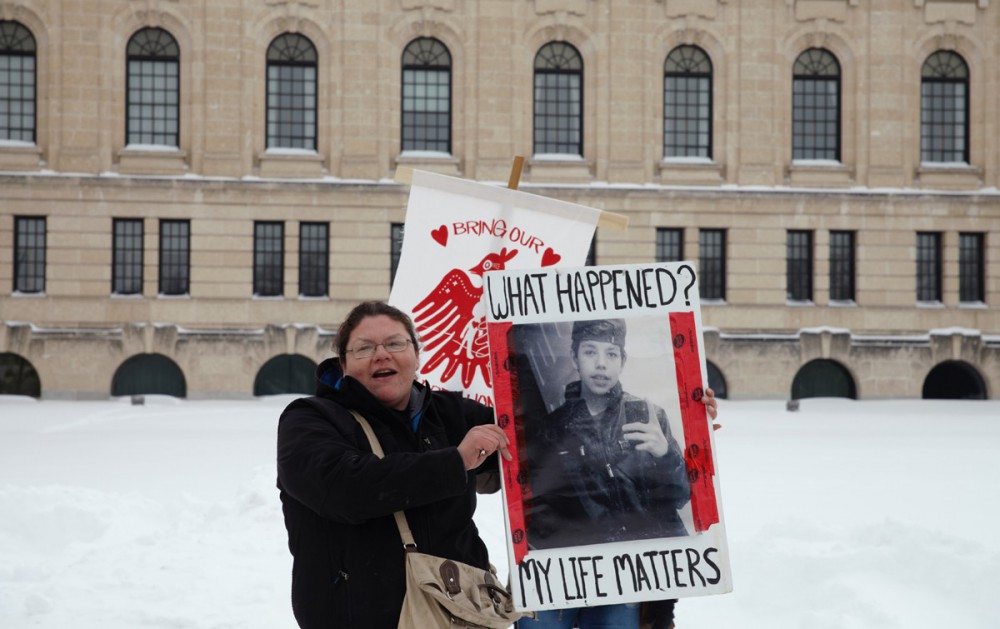
When Debbie was notified of Colten’s death, she fell to the ground. Instead of a moment of compassion, the RCMP rapidly moved past her to search her house without a warrant and asked her if she’d been drinking. The coming hours would see Colten’s body lying out in the heat and rain; it would see the vehicle with critical evidence left open to the weather, and blood spatter evidence washed away. The RCMP failed to bring in a blood pattern analysis expert to examine the vehicle in person, relying instead on analysis of photographs of the car. Later, the car was sent to a towing lot and not kept in storage. “The RCMP did a botched-up job,” says Debbie. “They looked, and then they looked away.”
During the trial, each side would blame the other for these mistakes. Each hand washes the other and systemic racism is dismissed as just another anomalous mistake. And while the justice system as a whole – created by a settler state whose genesis was Indigenous genocide – is biased against Indigenous people, it is each cop and authority figure along the way that upholds the status quo.
This is racialized justice in action, as victims of violence do not have their deaths correctly investigated and families are not treated with care and compassion. One can easily see this in the pattern of police investigations into missing and murdered Indigenous women and girls. Deaths are not taken seriously, investigations – when they’re even launched – are not rigorously pursued, and one case leads to another as settler systems permit complacency when Indigenous people are the victims of violence. This is what a two-tiered justice system looks like.
It is each cop and authority figure along the way that upholds the status quo.
The public uproar and complaints of the Boushie–Baptiste family resulted in a police investigation into how the investigation was conducted. In November 2017, the RCMP cleared itself of any wrongdoing. “[The RCMP] are not trusted by Indigenous people on the prairie,” Debbie commented. “How are we to trust the RCMP when they treat us like criminals when we are the victims?” Recently, an outside watchdog has announced that a broader review of the RCMP investigation will take place. But we are left to puzzle: what does this accomplish now? The family was treated horribly, and if it is found that the investigation into Colten’s death was flawed, where does that leave the family? The Crown did not appeal the acquittal and Stanley can’t be retried.
Closed doors
When the colonial system botches investigations and justice isn’t served, the only means through which Indigenous people can appeal are those embedded in the very same justice system that just failed them.
Richelle says, “I know what is wrong with the system: every door gets slammed in our face.” Richelle has navigated each and every so-called accountability and complaints process in the province. She’s launched appeals and met with the Public Complaints Commission, the Board of Police Commissioners, the Ministry of Justice, and the Ombudsman Saskatchewan office, among countless others. “I went to every door and they open it and then slam it – but then pat themselves on the back. They congratulate themselves when they say they did a good job. Each side backs up the other.”
This article is not just about Haven and Colten, because their cases are emblematic of the norm: a two-tiered justice system in which families are left to deal with endless failures by police, coroners’ offices, and courts (if they ever even make it to court). In the days after Stanley’s acquittal, Debbie was in Ottawa demanding justice for Colten, and Richelle was filing paperwork to access public records in her son’s case. Less than two weeks later, Raymond Cormier was acquitted in the murder of Tina Fontaine, in which the accused didn’t even launch a defence and yet was acquitted of charges that he rolled Fontaine into a duvet, weighed it down with rocks, and threw her body in the Red River. Two weeks later, the Supreme Court announced that it would review the order for a new trial in the Cindy Gladue case. Gladue died as a result of an 11-cm wound that prompted the experts to bring her preserved vagina into court – and the jury still found the accused not guilty. This is not an exhaustive list. It is a list that represents one month. In this system, what is decent and acceptable changes depending on the skin colour of witnesses, perpetrators, and victims.
“I went to every door and they open it and then slam it – but then pat themselves on the back.”
Richelle and Debbie are part of an ever-growing group of family members calling attention to the two-tiered justice system in this country. They are people that can be found at the rallies, marches, round dances, and camps that have sprung up across Canada. Finding herself in the unexpected role of community activist, Richelle comments, “there is not a handbook on challenging the system. I fly blindly and feel my way through the system.” Richelle, Debbie, and many others are entrenched in long battles seeking justice for their loved ones; attempting to grieve while confronted by a justice system that does not value their loss. It is a broad struggle that moves beyond individual cases: for justice to occur, Richelle notes, “we need total decolonization.”
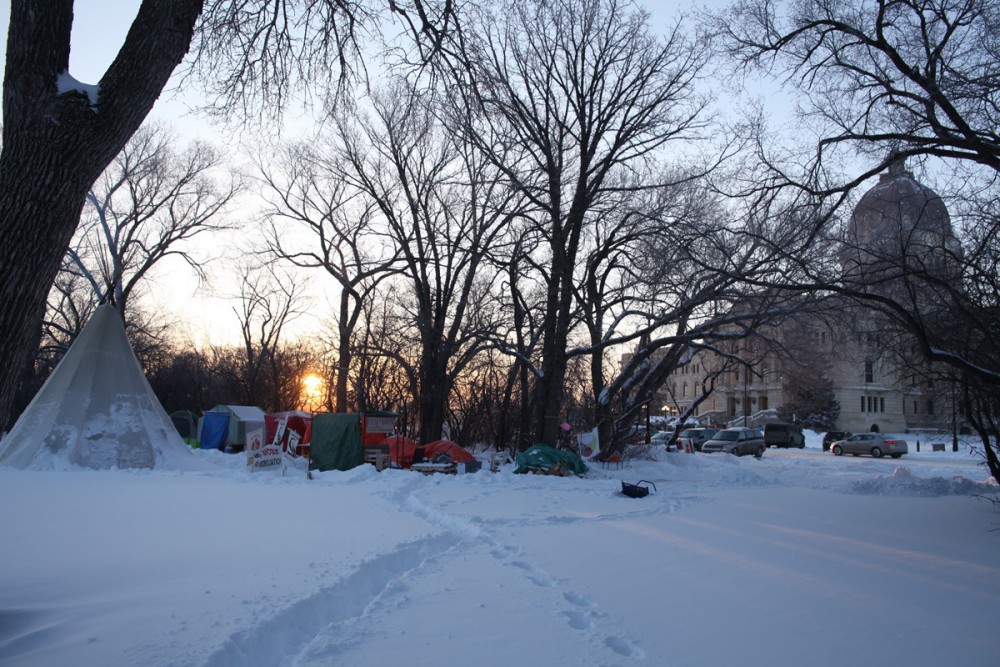
Postscript
We began writing in the hours after the Stanley verdict was announced and we completed our revisions while the not-guilty verdict was handed down in Fontaine’s death. On February 28, Richelle helped to start a camp on the lawn of Saskatchewan’s legislative assembly called “Justice for Our Stolen Children.” It is a space for Indigenous and settler families to come together for sustained resistance. Despite blizzards and threats of eviction, the camp has been standing for over one month – and counting.


